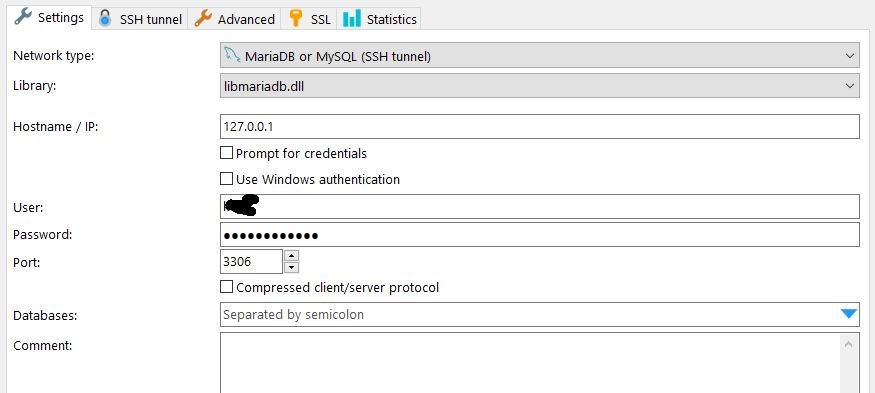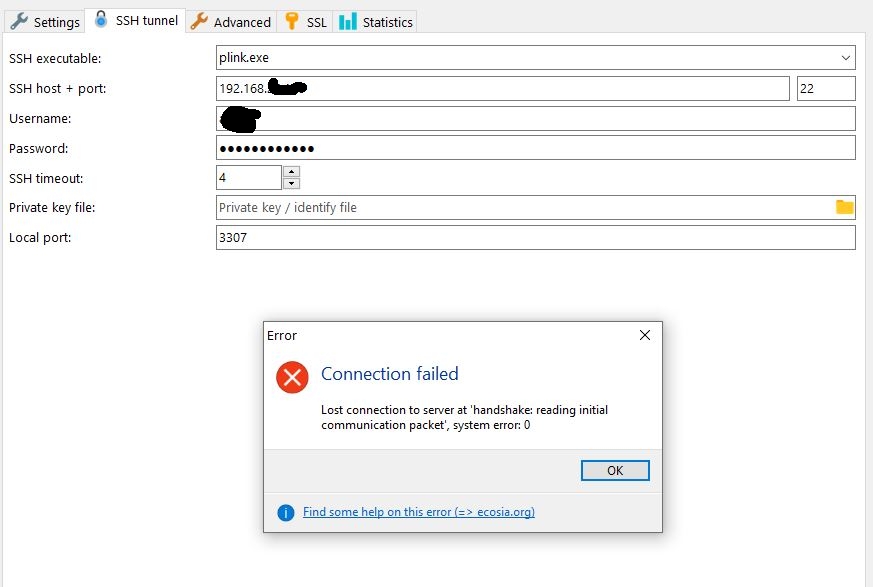Just started using HeidiSQL and it worked great connecting to my new MariaDB10 database.
I think it can also be used to connect to MariaDB10 via SSH and edit my.cnf. Qnap states that file is located below:
We use a custom implementation of MariaDB10, you just need to define the socket in the connection command. The correct way to connect to the Qnap version of MariaDB is as follows:
/share/"Data Mount Point"/.qpkg/MariaDB10/bin/mysql -S /var/run/mariadb10.sock -u root -p
I have HeidiSQL setup with the Settings as:
- Network type: MariaDB or MySQL (SSH Tunnel)
- Library: libmariadb.dll.
- Hostname /IP: IP address of the Qnap NAS
- Username and password supplied already successfully connects via HeidiSQL through TCP/IP
- Port 3307
SSH Tunnel Settings
- SSH executable: plink.exe
- SSH host + port: IP address of Qnap NAS port 22
- Username and Password supplied is root with password verified in phyMyadmin successful logins.
- SSh timeout 4
- Private key file: none supplied
- Local prt 3307
Everytime I click on open I receive a pop-up box root@192.168.20.50's password.
I put in the same password I KNOW works in phyMyadmin and it asks for the password again.
I comes back with Connection failed Access Denied.
I really like HeidiSQL interface. I reckon I could work through Putty, but I thought I would ask for help before I gave up.
Thank you in advance.


